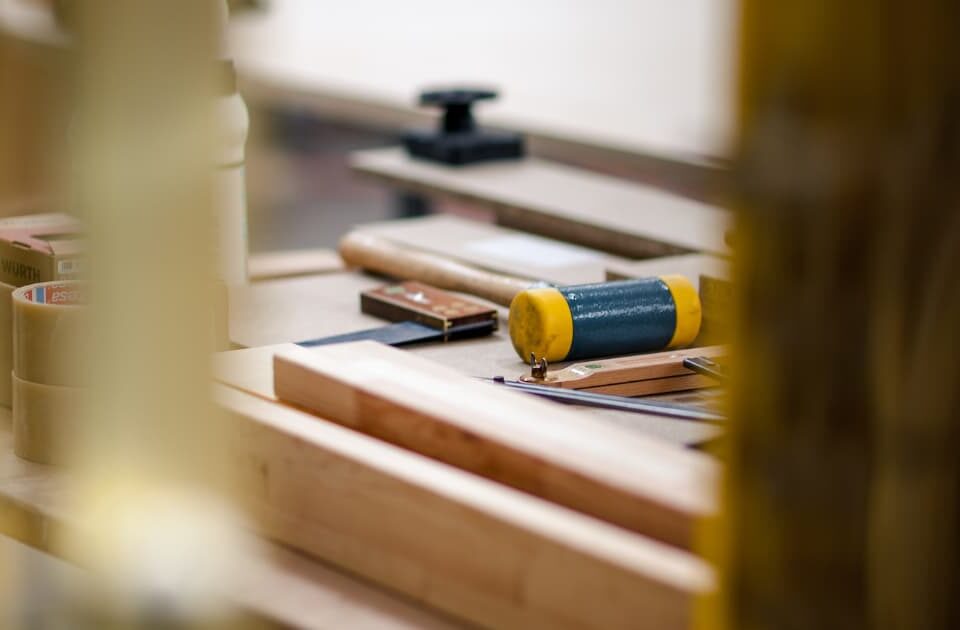Bathroom Flooring: A Mini Guide

15 of the Best Interior Design Instagram Accounts to Follow
23rd March 2020
Spring Garden Design Tips
6th April 2021One of the key elements of bathroom design is the flooring you choose. Picking the perfect flooring for your bathroom isn’t just about appearance, but it’s also about functionality. You need to pick a floor that will not only look great in your bathroom design but also perform under stress. Bathroom floors must be able to withstand a lot of water, and if you make the wrong choice, your flooring could quickly become ruined by the moisture.
Materials such as ceramic tiles or sheet vinyl are great for dealing with moisture, but additional factors such as appearance, durability and cost can lead you to other options. To help you find the perfect flooring for your bathroom design, we’ve created this mini guide to run through all your options.
Vinyl Flooring
Vinyl flooring is available as either sheets, planks or tiles, and is a highly popular choice for bathroom floors. Vinyl is extremely practical in those wet areas and also available in many styles to fit with any bathroom design. Sheet vinyl is perfect for areas where a lot of water is expected because it can be installed with very few seams depending on the room shape and size.
There are almost unlimited colours, patterns and styles available for vinyl flooring thanks to its popularity. This 100% waterproof flooring material is super easy to install yourself and is an affordable solution for any bathroom floor.
Engineered Wood
Many people think that wood should be avoided in bathroom design because it doesn’t bode well with water. However, engineered wood is much better at handling moisture compared with solid wood alternatives. Because engineered wood features a plywood base, it holds up very well when used as a bathroom flooring.
It is the perfect option if you want wooden flooring as part of your bathroom design, as high-quality engineered wood will look authentically like solid wood. The top layer of an engineered wood floor is a real hardwood veneer, giving it that solid wood effect and feel with added durability.
Porcelain Or Ceramic Tiles

Tiles are often considered the very best when it comes to bathroom flooring. This is because they are completely waterproof, cost-effective and super stylish to fit any bathroom design. The main question when it comes to tiling is whether to choose porcelain or ceramic. Porcelain tiles are actually part of the overall ceramic tile family; however, they have a higher water absorption rate.
A tile is considered as porcelain if the water absorption rate is 0.5% or lower. This means that porcelain tiles are always a more sensible choice when it comes to bathrooms where they will be a lot of moisture to withstand. Tiles come in so many different sizes, shapes and colours; they can create almost any bathroom design you desire.
Natural Stone
This type of stone flooring is perfect for a bathroom floor because it is hard, durable and looks great. The biggest drawback with natural stone for a bathroom design is that it can be very expensive and almost impossible to install without a professional. Stones such as granite, marble and limestone can work well but do need sealing to prevent moisture damage.
Whilst natural stone floors can be cold; this is easily resolved with radiant heating. Natural stone is the most expensive option when it comes to bathroom floors; however, it also upholds its value and can add to the resale value of a property.
Laminate Flooring
Laminate floors are an extremely cost-effective option for beautiful bathrooms. Because it is created using a photograph of oak, cherry, marble, slate or any other stone or wood, it looks remarkably like the real thing. It is topped with a clear wear layer which protects the flooring from damage and moisture.
There is a wood chip base below the design, which sometimes needs additional protection for it to be suitable in wet areas. As long as laminate floors are fitted with tight seams between planks, moisture should not be able to get into the material.
Rubber Flooring
Rubber floors are ideal for bathroom designs. Not only are they extremely durable and water-resistant, but they are available in almost any colour, pattern or texture. A textured finish is often safer as it can prevent slips and trip when the flooring gets wet. Rubber flooring is long-lasting, hard-wearing and super easy to maintain, making it a popular choice. Rubber flooring is usually available as either individual tiles or one single sheet.




